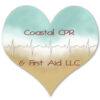I was preparing for class this week. It’s a program I don’t teach as frequently and I was reviewing the material to be prepared for the class. While the organizations I offer programs through are pretty similar, sometimes I come across things that are different.
One of the things that seems to be different is what to do when someone loses a tooth.
So, I went to my go-to place for information; I posted in my favorite instructors forum.
Like many of you I teach more than 1 program. And sometimes there are some discrepancies between them. This is one I have been wondering about for a while.
Someone knock out a tooth. Do you put it in a cup of milk or do you put it back in the socket?
ASHI Basic First Aid says put it in their socket, otherwise use a cup of milk
AHA Heartsaver First Aid says to not put it in their mouth, put in a cup of milk.
The American Association of Endodontists says to put it back in. http://www.aae.org/patients/symptoms/knocked-out-teeth.aspx
NH EMS Protocols state to put in saline or milk.
Thoughts?
The response was great, as always!
From the humorous:
I suspect neither process is really all that evidence-based.
Has anyone done a large double-blind study on knocked out teeth?
Fairy, Tooth et al (1994) “Blind randomized study of displaced incisors and reinplantation”, American Journal of Make-Believe Characters, 22
Thank you John!
To the very detailed:
In a quick look, (not surprisingly) there are no randomized controlled trials on re-implantation v. transportation in any certain medium in first aid setting. The inconsistency in treatment recommendations lies in the reality that in 2010, no evidence-based worksheet was completed on this topic, so there was no consensus on science – and thus no consensus on treatment recommendation. The AHA/ARC 2010 Guidelines writers cite 4 papers in their decision not to include re-implantation, even though three of those papers suggest replanting the tooth into the socket treatment as the treatment of choice. The topic was discussed in 2005 and 2010, and I remember some concern being voiced about the lack of evidence for re-implantation by first aid providers and whether recommendations should be made to do so in light of that. This is similar situation to epinephrine auto-injectors, aspirin administration, and many other topics. There is very little good research in the provision of first aid and conflicts arise as a result. The medical literature generally indicates re-implantation as the recommended treatment. This is reflected in the recommendations of the National Institutes of Health https://www.nlm.nih.gov/medlineplus/ency/article/000058.htm and as Gail as pointed out, The American Association of Endodontists (tag line; “The Specialists in Saving Teeth”).
… There was an ILCOR question that looked at the evidence for use of solutions prior to replantation, but not replantation itself. https://volunteer.heart.org/apps/pico/Pages/PublicComment.aspx?q=794 Curiously, even though the question addressed solutions and not replantation, the authors of the draft treatment recommendation write “Immediate reimplantation of the avulsed tooth is known to yield the highest success, however it is often not possible to reimplant due to a lack of training or skills in the reimplantation procedure. Therefore, the priority is to get the patient and the avulsed tooth to someone trained to reimplant the tooth as soon as possible”. No evidence is cited for that conclusion, which essentially means it is expert opinion. Of course, experts often disagree. My guess is that the inconsistency in recommendations won’t be resolved this time around.
Thank you Ralph!
And of course, a fun tooth fairy related link: http://nursingclio.org/2013/12/10/odd-adventures-in-tooth-fairy-history/
So what is the consensus; put the tooth back in or keep the tooth out? Well, there doesn’t seem to be a consensus. So for now I will follow the recommendations of the program I am teaching. And remind everyone to brush their teeth every morning and evening. 🙂
